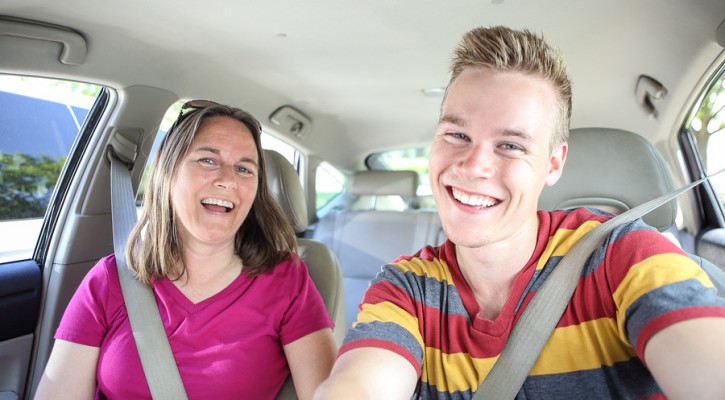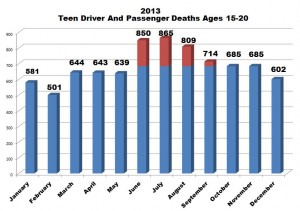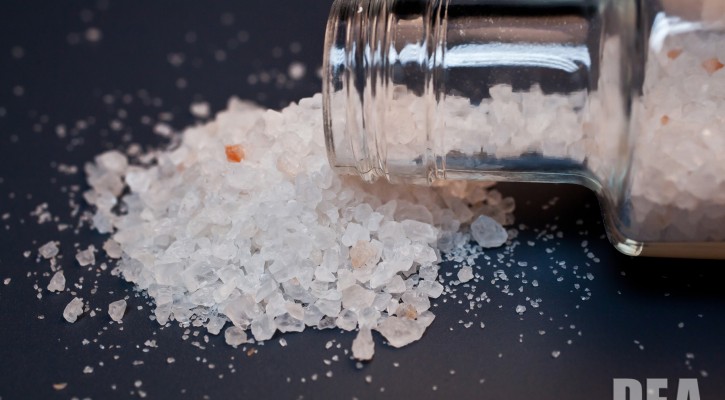
Self-Driving Car Wish List For Teens And Parents
May 11, 2015
When it comes to a wish list for self-driving cars, teens and parents share some ideas but differ widely on others. This not too surprising fact is the result of a study conducted by the Carnegie Mellon University School of Engineering (CMUSE).
CMUSE surveyed 1,000 people aged 18 – 70 on what types of features they thought should be included in self-driving cars. Parents, overwhelmingly wanted features to control their teen’s driving. Among the features parents wanted to see included in self-driving cars for teens were:
Controls to set speed limit, curfew time and number of passengers.
Eighty-four percent of respondents, including a majority of the youngest drivers, said their self-driving car wish list would include these features. Among the strongest advocates for these features are:
- People ages 66 to 70 – 91%
- Women – 87%
- People ages 18 to 24 – 81%
Controls to limit speed and the number of passengers could save countless lives among teen drivers. Excessive speed and driver distraction are among the top causes of crashes among teen drivers. Passengers are especially dangerous because they create a distracting environment for teen drivers and teen drivers tend to show off and take greater chances by speeding when they have peers as passengers. With the car controlling the speed, the teen driver can blame his slow driving on the car and still save face.
One might wonder why a limit on passengers would be necessary in a self-driving car. Most self driving cars, at least in the beginning, would still require a driver to be alert and take over in the event of a systems failure or where the computer fails to recognize a hazard. The more passengers there are, the more distractions there are for the driver and the greater the chance for a crash.
Curfew times are another good idea. Teens tend to be sleep deprived and falling asleep at the wheel is an all too common occurrence. A car that could keep a teen driver from staying out too late could also save a lot of lives and parent’s frayed nerves.
Control feature to limit the geographic range the car will travel.
Not surprisingly, this is a feature that most parents – men (62%) and women (61%) – want but the idea isn’t too popular among younger drivers with barely half (54%) thinking this feature is a good idea.
Parent text display to communicate with driver
This is another one of those wish list features that showed a large generational divide with 69% of the youngest drivers thinking it a good idea while only 53% of people aged 56 to 65 favored it. Women favored the idea (63%) more than men (57%). However, texting in any fashion whether using a hand-held cell phone or a built-in display screen, isn’t a good idea because it takes the driver’s eyes off the road for too long.
The need for and effectiveness of these wish list features will depend on just how completely autonomous the self-driving cars will be and how secure and hack-proof the control systems are.
Read more: Teens Probably Won’t Like Self-Driving Cars, But Their Parents Will

Teens Drive Better When Mom Comes Along
May 8, 2015
Teens drive better when mom comes along and they feel good about it too according to a study conducted by the Beckman Institute for Advanced Science and Technology, University of Illinois, Urbana – Champaign.
In this novel study, 25 fourteen year old teens were each placed in an fMRI machine that allowed the researchers to view and record their brain activity while driving a computer simulated driving course. The fMRI machine shows blood flow to areas of the brain that are most active. The teens were paid for their participation but they were also told that, if they scored the fastest time, they would get more money.
The course had 26 intersections and the timing of the lights and the presence of cross traffic varied so that the teens wouldn’t experience the same traffic patterns each time. If the teen stopped at a traffic light, it cost them three seconds added to their time. If they attempted to run a red light and were involved in a “crash,” it cost them 6 additional seconds.
When teens drove alone, they were much more likely to try to make it through a yellow light before it turned red. If they made it through safely, without costing them any more time, the researchers were able to see more blood flow to the reward center of the brain. In other words, the teens felt good about their decision and you could witness that good feeling as it appeared in the brain.
When the teens were told their mom was watching, the teens drove much more carefully and tended to stop when they encountered a yellow light. The strange thing is that, with mom “in the car,” the same reward area of the brain lit up when they drove safely.
It appears that, if a parent is along, teens tend to take fewer chances and they actually feel rewarded by driving in a safe manner.
Of course mom can’t be in the car at all times but there are systems that allow moms to look over their teen’s shoulder. There are a variety of apps and plug-in systems that report if the teen is driving aggressively, turn off the cell phone and inform the parents of the teen’s location. If only they could bake cookies too.
Read more: Having Mom in the Car Changes Teen Driver’s Brain

100 Deadliest Days For Teens
May 7, 2015
May is here and that means proms, graduations and the beginning of the 100 deadliest days for teens. Due to the above average number of teen driving deaths, the summer driving period – between Memorial Day and Labor Day – is historically known as the 100 deadliest days for teens.
In 2013, the last year for which there are figures, there was a monthly average of 685 teen drivers and passengers, aged 15 through 20, who lost their lives on US roadways. During the months of June through September, 498 additional teen drivers and passengers lost their lives in traffic crashes; an increase of 18.25% over the annual monthly average.
 What are the reasons for this increase in teen traffic deaths? Some of the reasons include:
What are the reasons for this increase in teen traffic deaths? Some of the reasons include:
- Lack of experience behind the wheel.
- Bored, unsupervised teens looking for excitement.
- Distracting passengers.
- Long, hot days on the beach or lake that can lead to dehydration and fatigue.
- Use of alcohol and drugs.
What can parents do to reduce this risk?
- Set limits for the number of passengers a teen can carry (this limit may already be set by law in your state).
- Set and enforce curfews.
- Keep your teen busy with chores or a summer job.
- Ban the use of cell phones and texting while driving.
- Avoid the temptation to check up on your teen by calling or texting while the teen may be driving. Instead, set a rule that the teen must call you upon arrival at a destination and upon departure.
- If necessary, use a smartphone app that can limit your teen’s cell phone use while driving along with tracking his or her whereabouts.
- Agree upon and sign a teen driving contract with your teen and enforce penalties for violations.
- If your teen is to be a passenger of another teen driver, know who that driver is and refuse permission if the teen is carrying too many passengers. Every teen passenger a teen driver carries increases the crash risk.
Don’t let your teen become a 100 deadliest days statistic.

Two Dangerous Drugs Hit Florida’s Streets
April 14, 2015
Two dangerous drugs are gaining in popularity according to health and law enforcement officials in Florida. Users of the drugs, known commonly as “Flakka” and “N-bomb” are showing up more and more in emergency rooms in critical condition.
The problem for law enforcement is that both of these dangerous drugs fall into a class of drugs known as synthetic or designer drugs in which a controlled substance or illegal drug is chemically changed. Altering these drugs is relatively easy and cheap and the result is that they retain most, if not more, of their psychoactive power but, because of their changed chemical structure, they’re no longer classified as illegal drugs. Law enforcement officials are powerless to do anything until state legislatures or the federal government can act to add the drugs to the list of illegal substances. Once they’re added to the list, drug dealers can simply perform another chemical modification and they’re back in business.
Flakka
Flakka belongs to the same class of chemicals known as cathinones used in bath salts. According to health experts, there were a total of 126 reported deaths tied to synthetic cathinone in Florida in 2013.
Flakka creates a hallucinogenic effect described by health experts as “excited delirium.” It produces a psychotic effect and leads to paranoia in which the user feels he or she is being chased and they’ll do anything to escape their pursuers.
Users can suffer from hypothermia causing their body temperatures to rise to as much as 105 degrees. Due to the high body temperatures, users are often found stripped down or even naked in the street.
The drug also gives the user an almost superhuman strength requiring as many as five police officers to restrain them. In severe cases, the drug can also cause muscle tissues to decompose and flow into the bloodstream. If that happens, it can lead to kidney and heart failure.
Flakka looks like its cousin bath salts; basically similar in appearance to epsom salts or rock salt. The drug can be swallowed, inhaled or injected.
As the drug wears off, it creates a severe depression effect causing users to take more of the drug to put them back in their former euphoric state of mind.
N-bomb
N-bomb is referred to as a legal or “natural” LSD and is responsible for at least 17 deaths since 2010.
This drug has many of the same effects on its users as Flakka including; hallucinations, psychosis, paranoia, and hypothermia.
The only way for emergency rooms to treat for the drug is to manage agitation and treat the various symptoms to prevent organ failure. External cooling of the body is also necessary.
N-bomb can come in liquid form or sold on blotter paper. In its powder form, it can be sold loose or in capsules. It can be inhaled, injected, or absorbed through the lining of any body opening.
These dangerous drugs are very cheap to manufacture compared to drugs like meth or cocaine and that low cost is creating an even greater demand for the drugs on the street. According to health experts, both Flakka and N-bomb are highly addictive.
Parents need to be aware of the presence of these drugs and be on the lookout for anything that may be similar in appearance to the drugs and for any unusual behavior among their teens.
Read more: Authorities are cracking down on the new street drug, flakka, known as ‘$5 insanity’

Spring Break Violence Leads To Crackdown In Florida
April 9, 2015
Spring break violence has seemingly spiraled out of control in Panama City Beach leading to a crackdown by city officials on the availability and access to alcohol.
So far, during this spring break period, Panama City Beach and Bay County spring break violence incidents have included, among other things;
- A shooting,
- An alcohol related drowning,
- A pedestrian killed in a hit and run,
- An 848 percent increase in crimes,
- A missing 15 year old girl,
- A paralyzed college student with no memory of his injury,
- An unprovoked beating of a 93 year old man,
- Multiple sexual assaults,
- Multiple vehicle crashes,
- Multiple beatings,
- More than 1800 arrests – a 70 percent increase over last year,
- More than 70 gun seizures – a 106 percent increase over last year,
Things came to a head when seven people were shot at a house party, leading to an emergency meeting of the county commission and city council.
All were in agreement that this is the worst spate of spring break violence that they had ever seen but not all were in agreement over what to do about it. Alcohol vendors and club owners say they shouldn’t be blamed for the behavior of others and suffer loss of income as a result. Homeowners along the beach threaten a recall of the city council if something isn’t done to curtail the violence.
The sheriff of Bay County proposed several ordinances for next year including an alcohol ban on beaches and parking lots, a ban on alcohol sales after 2:00 AM, ID checks for anyone in possession of alcohol, and strict enforcement of fire codes to control crowds.
For this year, both the city council and county commission have passed emergency ordinances to ban alcohol on beaches and parking lots through April 18th. They will meet again later to consider a permanent alcohol ban.
Read more: Spring break emergency: Florida city cracks down on alcohol after alarming spate of violence
